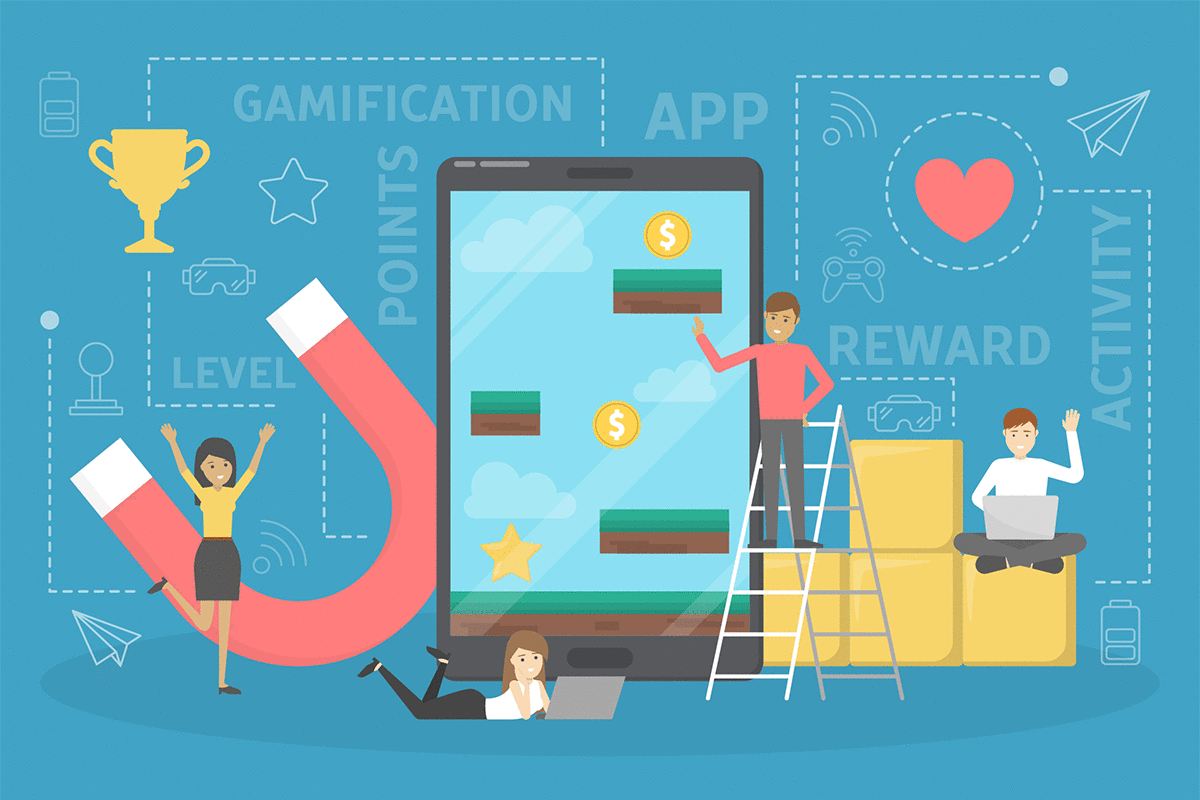Seriously, who doesn’t enjoy playing games?
Whether they’re sports, board games, or video games, they provide tons of fun and an escape from the routine of everyday life.
Games are also a great way to connect with others, as well challenge and stimulate ourselves.
Conversely, for some people, words like learning, education, and study, don’t bring about the same feelings.
After years of formal education, some of us have lost the pleasure that we used to get from learning new things or don’t make enough time to do so.
In today’s fast-paced world, this isn’t just a shame – it’s problematic. Things are developing so rapidly in almost every field of work that a commitment to lifelong learning is essential if you wish to remain competitive and succeed in the modern workplace.
Gamification, however, is a way of taking many of the principles that make games fun and stimulating and applying them to educational material.
This, in turn, makes learning more interesting and engaging, and increases the likelihood that a student will not only commit to further study but also successfully retain more of the material.
A Different Approach

With traditional study methods, you’re given some material to learn and left to your own devices with an understanding you’re going to be assessed at the end.
This assessment, whether it’s in the form of an exam or a project, tests you on your ability to retain the bulk of the information you were given, and then gives you a score or grade based on how well you did.
Looking at it like that, it’s little wonder some people have less interest in studying once they’re done with school.
Games, on the other hand, start you off from scratch and increase in difficulty once you’ve mastered the basics.
You progress through levels, with a new one becoming available once you’ve become competent enough at the one preceding it. Applying this to learning activities makes the material more manageable for the student, and is far more likely to result in them wanting to carry on.
What’s more, having levels of progress highlights the information that they have to absorb in order to move on and makes it easier to retain.
This increases the sense of achievement they feel as they learn and gives them a much greater incentive to continue.
Motivation

Games also highlight the different ways in which people are motivated: Some people are extrinsically motivated, meaning they are driven by high scores, rankings, leaderboards, and progressing through levels.
Others are intrinsically motivated and play for the sheer enjoyment, challenge, and personal satisfaction that comes with getting better.
When some of these principles are applied to learning activities, they take advantage of what drives the student and results in greater engagement.
Gamification expert Andrzej Marczewski’s RAMP framework (Relatedness, Autonomy, Mastery, Purpose) offers a simple way of applying a set of principles of gaming to learning activities:
Relatedness

This is anything that encourages a sense of belonging.
This could include leaderboards and rankings that allow students to compare and compete against each other, as well as forums and message boards that enable them to realize others are having the same difficulties.
Autonomy
This is the freedom to approach the material in a number of ways.
This is found in the concept of levels, as a user has the freedom to repeat a level as many times as they desire until they feel comfortable to move onto the next.
This allows them to hone in on what they need to work on the most and subsequently pay less attention to the material they have a better handle on.
Another way this could be incorporated is through the inclusion of different game modes that allow learners to approach the content from different angles.
This kind of freedom creates greater ownership of the material which creates a feeling of personal responsibility.
More responsibility then leads to greater engagement which makes learners more comfortable with the idea of studying and promotes lifelong learning.
Mastery

Games give a player a feeling of mastery – the idea that after time and effort, they are improving. Better yet, this mastery is measurable and can be seen through the accumulation of points and advancement through ranks and levels.
This is in contrast to traditional study, in which a student often gets a sense only of their progress only upon completing an assessment.
The problem here is that by the time they receive their score or grade, they could have become disillusioned and less motivated to carry on.
Requiring someone to start a course and take an exam again after ‘failing’ can be a big ask.
However, by applying the concepts of points, scoreboards, levels or ranks, a student has access to frequent, real-time feedback.
Students can discover the parts of the content they need to improve on and make mid-course corrections.
This further develops their sense of ownership over their development and provides greater motivation to continue.
Purpose

Instead of merely knowing what they are learning, a student needs to have a strong why to keep them motivated.
Why are they learning this new material or skill? How does it stand to benefit them in particular? What do they get after making the commitment to learning it?
Encouraging the student to find their purpose will go a long way to keeping them on track when they encounter bumps along the road.
Applying gamification principles to educational material reminds students that learning doesn’t have to be laborious and boring, but can actually be enjoyable and rewarding.
This can spark a greater interest, or even a desire, to learn more frequently which is the key to lifelong learning.
Not convinced? Lots of businesses have recognized the power of eLearning and its related tools. Check out some of these examples.









